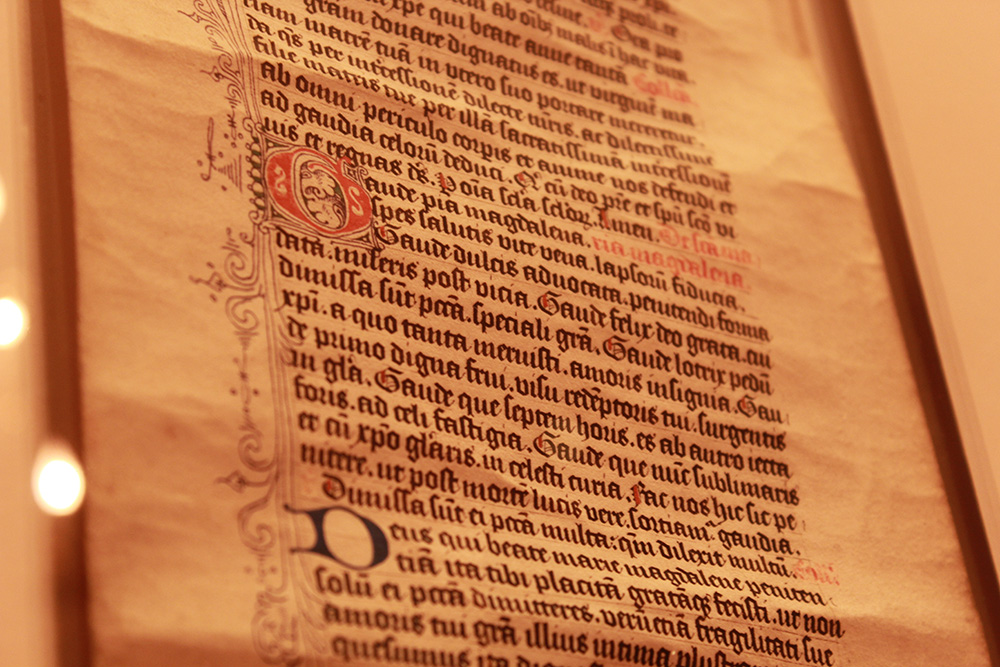The Handwriting on the Harvard Scrolls
The dating of the scrolls and handwriting in the exhibition ranges from the 12th century to the 15th. A brief account of how Latin handwriting developed during that period will clarify the broad historical context of the scrolls and the terms used for describing them. The one Greek scroll in the exhibition, MS Typ 416, Divine Liturgy of St. Basil the Great, is written in a clear and regular minuscule script, typical for 13th century Greek liturgical manuscripts.
12th century Latin scripts reveal the beginning of cultural and economic changes that accelerated in the course of the later Middle Ages. Supported by economic and population growth, monasteries, towns, cities, and schools grew during the “Twelfth-Century Renaissance.” The growth of economic activity and learning brought an increasing market for books. The Romanesque style flourished, but later construction continued to push upward using the ogive, or diagonal rib of the so-called Gothic or pointed arch. The rounded letter tops of 12th century writing are likened to the romanesque arch, while their Gothic counterparts are compared to the pointed arches.
An efficient and legible script developed in order to write as much as feasible in the smallest possible space. As the Gothic developed further, there was increasing compression and straightness of the strokes. The 15th century Humanists gave the name Gothic to this script. Gothic was in wide use around 1200 and existed in numerous forms. Three broad types are classified as:
1. Textual Gothic, a bookhand
2. Cursive Gothic
3. Hybrid Gothic, a formalized cursive script.
Within the three types, there are different degrees of accuracy and cursiveness as well as distinctions of angularity and rotundity.
The various scripts found in the Houghton scrolls:
 MS Typ 216: Peter of Poitiers, Compendium – upright early Gothic bookhand |
 MS Typ 216: Peter of Poitiers, Compendium – upright early Gothic bookhand |
 MS Typ 216: Peter of Poitiers, Compendium – upright early Gothic bookhand |
 MS Typ 216: Peter of Poitiers, Compendium – upright early Gothic bookhand |
 MS Typ 286: Indulgence Roll – Gothic book hand |
 MS Typ 584: Septenarium pictum – proto-Gothic |
 MS Typ 11: Genealogical history of the Kings of England – Gothic book hand |
 MS Typ 550: Rhymed Prayers of St. Bernard – careful rounded Gothic |
 MS Typ 41– French hybrid Gothic, also called bâtarde |
 MS Fr 495 – Hybrid Gothic, close to French bâtarde |
 MS Typ 1001: Pilgrimage of Peter of the Cross – small rounded Gothic bookhand |
 Typ 416: Divine Liturgy of Our Holy Father Basil the Great – Byzantine Greek archaizing minuscule |
